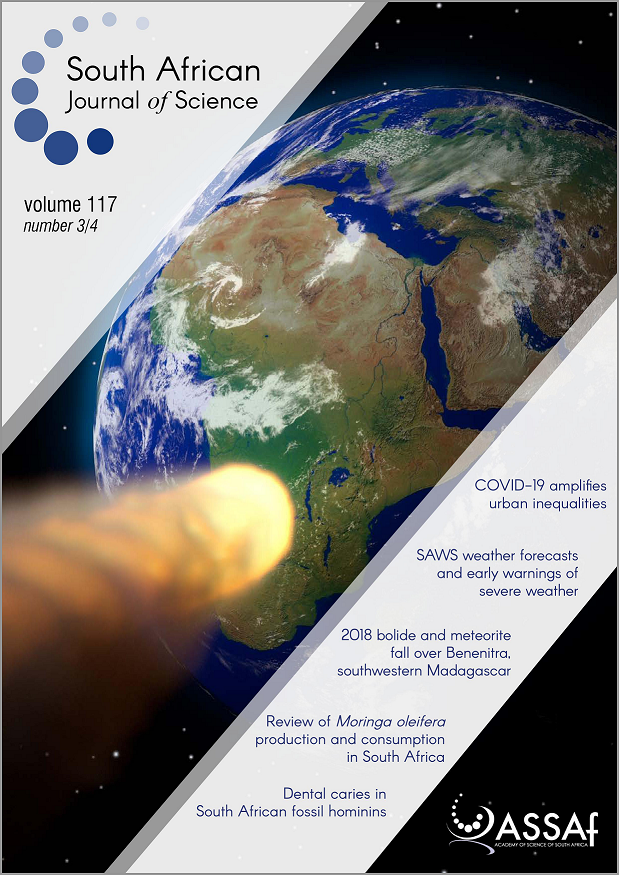Shark–seal interaction off South Africa’s west coast during the early Pliocene (5 Ma) (with corrigendum)
DOI:
https://doi.org/10.17159/sajs.2021/8837Keywords:
white shark, phocid seal, Homiphoca, Carcharodon carcharias, Langebaanweg, bite markAbstract
A study of the Mio-Pliocene marine palaeoenvironment on South Africa’s west coast revealed aspects of the biology and behaviour of fossil marine mammals. Close examination showed that seals from Langebaanweg suffered from pathologies and bore marks of marine carnivore activity. This study adds to our knowledge of shark feeding behaviour in the geological past and is one of a few studies of sharks feeding on seals in the fossil record. Two incomplete seal humeri with shark tooth marks are the first documented evidence from South Africa’s Mio-Pliocene of such behaviour. These injuries show no healing, which suggests that the animals were most likely scavenged.
Significance:
- Fossil rich deposits at Langebaanweg contribute to the knowledge of South African Mio-Pliocene fossils by placing them in a global context.
- This study is one of five globally that have documented marine carnivores feeding on seals.
- This is the first description of white sharks feeding on seals from South Africa’s geological past.
- This study shows this behaviour was in place on South Africa’s coast as early as 5 million years ago.
- The injuries show no signs of healing, suggesting the most parsimonious explanation is that white sharks were scavenging seal carcasses.
Additional Files
Published
Issue
Section
License

All articles are published under a Creative Commons Attribution 4.0 International Licence
Copyright is retained by the authors. Readers are welcome to reproduce, share and adapt the content without permission provided the source is attributed.
Disclaimer: The publisher and editors accept no responsibility for statements made by the authors
How to Cite
- Abstract 881
- PDF 638
- EPUB 158
- XML 152
- Corrigendum 69
Funding data
-
National Research Foundation
Grant numbers UID 98834;UID 117782












.png)